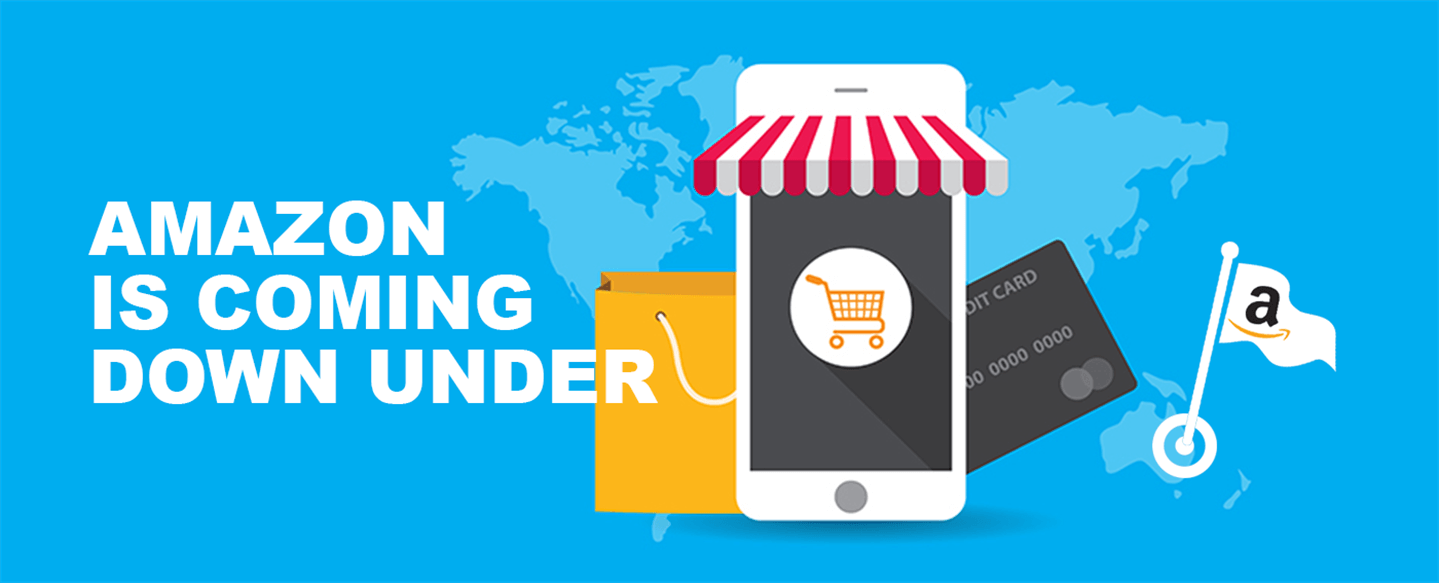Is your eCommerce website Amazon-ready?

If you’re working in the online retail industry in New Zealand or Australia, or if you’re simply an online shopaholic living down under, you would have heard the news that Amazon was coming. The challenge, however, for eCommerce professionals, has been to identify if this would be a threat or an opportunity. While entry into the Aussie market from the world’s biggest online retailer seems intimidating, many retailers wonder how they could take advantage of it? Better yet, how to secure traffic to local online shops?
There has been months of speculation on when Amazon would launch. It peaked on the 21st of November 2017 when LifeHacker.com.au announced “Amazon is, we suspect, just days away from launching their online retail service in Australia.” The following day, emails leaked stating Amazon Australia launch date was the 23rd of November. Articles about Amazon’s entry into the Australian market and potentially, New Zealand, have been flooding local newsfeeds. All sorts of assumptions have been made regarding the impact on the regional online retail sector but not so much guidance provided to the online merchants on how to best prepare themselves for “Goliath’s” arrival.
When the article “NZ Post launches service like Amazon Prime” reads they are teaming up with The Warehouse Group's brands to launch a free delivery service, it usually is a sign something big is on the horizon. Corporate players such as Supermarket co-operative Foodstuffs are gearing up their own online strategy, but it is difficult to know how to prepare when you’re a Small to Medium Online Business (SMOB) or even a local retailer.
"It's vital for retailers to embrace the changing dynamics, step out of their comfort zone and chart their own way forward or risk being left behind." quotes Euromonitor International analyst Hianyang Chan in the NZ Herald, “Amazon's launch might be the moment when shopping behaviour in Australia swings decisively towards e-commerce". It seems logical to believe Amazon’s arrival will shift shoppers behaviour and more likely affect brick-and-mortar retailers by giving higher incentives to buy online. “Jonathan Elms, lead researcher and a professor at Massey, said Amazon would have the largest impact on retailers that competed on price.”
Nevertheless, some interesting opportunities have also been highlighted “the Amazon effect was not all bad news, with consumers set to benefit from retailers who were investing in better in-store experiences and more integrated store and online sales platforms.”
Our experience over the last fifteen years in the web design and eCommerce industry, tells us the change in the online industry landscape is most likely going to be the most significant disruption our sector has ever known in New Zealand.
Our clients’ online competitiveness is paramount - after all, it’s a reflection of the good work we do - so it's an easy decision to help our customers adapt or upgrade their website in preparation. Below we share our top 5 recommendations to give your website the competitive edge and help engage a broader audience.
#1. Don't be left behind - get online NOW!
If you’ve been wondering when to shift your bricks and mortar store online, NOW is the time to do so. Fact - Amazon will encourage consumers to buy more online. Either follow the trend or fall behind as Chan explains: “Amazon's launch might be the moment when shopping behaviour in Australia swings decisively towards e-commerce. [...] It will be vital for retailers to embrace the changing dynamics, step out of their comfort zone and chart their own way forward or risk being left behind."
#2. Give your existing website a facelift
If you’re already operating an eCommerce website, it would be useful to contact your web developer and ask for an audit. The basics to ask for: Is your site responsive? Have you got an SSL certificate? How secure is your hosting service provider? How fast is your page speed? Are your images optimised? What are your main keywords and is your site utilising them? What could you do to improve the usability? and how can you improve the customer journey? You can use several FREE online tools that provide some understanding of your website performance like Website Grader from Hubspot or Test my site from Google. However the guidance from an expert will be invaluable.
#3. Think 'Customer Experience'
Whether your shoppers buy online or in a physical store, map out all the touch points from their first interaction with your brand to the buying process and beyond. Find out which technology will assist you in building more personalised shopping experiences like Ometria, Hubspot or Salesforce. “The merging of selling, presenting the product and experiencing the product — all at the same time — is only going to increase sales dramatically,” states Scott Brinker, Chief Martech. “Marketing, of course, has grown way beyond websites, emails and ads. It’s now augmented and virtual reality, intelligent voice agents and messaging bots, the Internet of Things' environmental sensing, and the insight and cognition available through artificial intelligence. In many ways, marketing is looking, sounding and feeling less like its traditional role of “demand generation” and more like “experience management.”
#4. Create long-term Customer Relationships
Technically, this approach follows on from recommendation #3 as it is an aspect of the Customer Experience. However, an emphasis on relationships is necessary as Chan summed it up: "This disruption (Amazon’s entry in Australia) will likely force current retailers to leverage their relationship with their customers better, strive to offer a more exclusive range and further innovate to improve their services and product offerings to better entice consumers.” Take advantage of your existing customer database - create targeted email marketing campaigns or special offers, implement eCommerce loyalty programmes and amplify personalisation with appropriate analytics tools - there are infinite manners to strengthen relationships. “The business case for personalization is straightforward. If we can provide our visitors/users/customers with more relevant, useful experiences, they should respond by engaging more deeply, converting more often, and so on,” said Nick Iyengar, an Associate Director of Digital Intelligence at Cardinal Path.
#5. Sell on Amazon.
Take advantage of the situation - after all, Amazon is opening up the gate to a broader market your eCommerce website would never reach unassisted. There are platforms like BigCommerce or Shopify that list your products on Amazon, directly from your eCommerce Content Management System (CMS). While these CMS facilitate your entry to the world’s largest online market, you may need to keep an eye on your profit margins which can decrease with added transaction fees or commissions that may occur.
*BONUS Fuel Recommendation*
Stay on top of your game. Don’t rest on your laurels once you have the killer website and engaged customers. It is going to take constant adaptation to maintain your presence in a large and evolving market like Amazon. This is where static solutions and the limited potential of “off the shelf” templates can lead to other frustrations down the road. Talk to your web partner about the options in front of you.
Need further guidance?
GET IN TOUCH WITH FUEL TO BOOK YOUR FREE CONSULTATION



